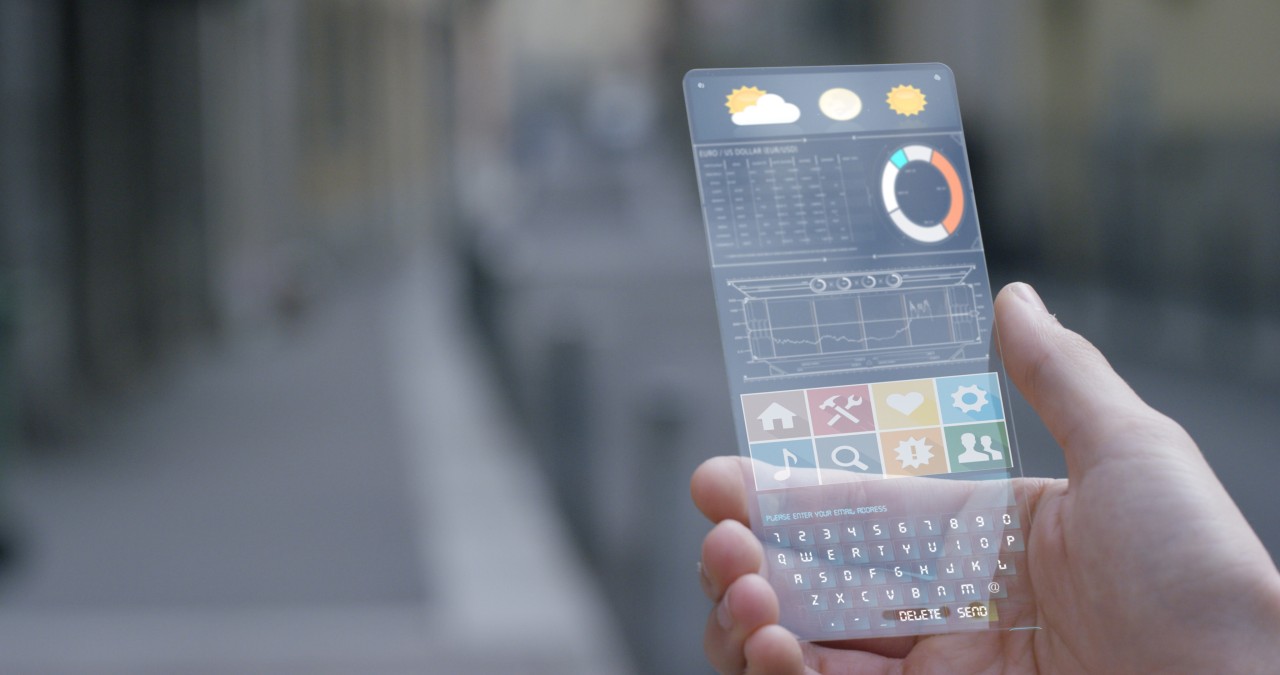
Introduction: A Glimpse Into Tomorrow’s Technology
Smartphones have dominated the digital era for more than a decade. They’ve revolutionized how we communicate, access information, and manage our lives. However, leading companies are starting to look beyond these pocket-sized screens. Today, tech giants envision future beyond smartphones, focusing on immersive technologies that integrate more naturally into our daily lives. This shift represents a significant evolution in how humans will interact with technology—moving from screens to surroundings.
The Smartphone Plateau: Are We Reaching the End?
Over the past few years, innovation in smartphones has started to slow. While camera upgrades and software improvements continue, the basic form factor of a smartphone has remained unchanged. Industry leaders are aware of this saturation and are looking for more meaningful advances. The question is no longer “what’s the next big smartphone feature?” but rather, “what will replace the smartphone altogether?” As a result, companies like Apple, Meta, Google, and Samsung are redirecting their focus to new frontiers of digital interaction.
Why Are Tech Giants Moving Beyond Smartphones?
Several reasons explain why tech giants envision future beyond smartphones. First, consumer expectations are evolving. People now want faster, more immersive, and hands-free experiences. Second, emerging technologies like AI and spatial computing are opening up entirely new possibilities for interface design. Third, wearables and ambient devices create a deeper sense of integration into the user’s environment—going beyond the flat glass screen.
The following drivers are accelerating the transition:
- Innovation Limits in Smartphones – Yearly phone releases now offer only incremental upgrades.
- Demand for Seamless Integration – Users want tools that don’t just fit in pockets—they want devices that fit into their lives.
- The Rise of AI and Immersive Tech – Artificial intelligence and augmented reality promise experiences that phones simply cannot provide.
- Profit in New Markets – The wearable tech and smart-glasses sectors are multi-billion-dollar markets waiting to be fully tapped.
Spatial Computing & Mixed Reality: Enter Apple and Meta
One of the most discussed technologies leading the shift is spatial computing. Apple’s Vision Pro headset, released in 2024, offers a fully immersive mixed-reality experience. Instead of relying on taps and swipes, it uses eye-tracking, hand gestures, and voice commands to control apps and navigate 3D digital spaces.
Meta is not far behind. Their Orion smart glasses aim to merge real-world visuals with digital overlays. Unlike previous AR devices, these glasses are lightweight and equipped with AI capabilities, making them more practical for daily use.
In both cases, the goal is to make technology more “present” without making it more intrusive. These devices suggest that tech giants envision future beyond smartphones where digital experiences are not confined to rectangles—but are all around us.
Ambient and Wearable Devices: The Next Computing Layer
Another major trend is the development of ambient computing—where technology exists in the background and becomes part of your environment. This includes AI-powered smart rings, earbuds, neckbands, and contact lenses.
For instance, Meta’s AI-powered Ray-Ban glasses can take photos, translate languages in real-time, and give voice feedback—all without a smartphone in hand. Similarly, Amazon’s Echo Frames and Samsung’s Galaxy Ring are leading examples of how tech is blending with lifestyle accessories.
These wearable devices offer several advantages:
- Convenience: No need to pull out your phone.
- Efficiency: Hands-free, voice-enabled access to apps and information.
- Personalization: Devices that adapt to your preferences in real-time.
These shifts clearly support the idea that tech giants envision future beyond smartphones, aiming to create tools that work in harmony with the human body and environment.
AI As the New Operating System
Artificial intelligence is becoming the backbone of the post-smartphone world. Companies are building systems that learn from users and adapt automatically. AI assistants will soon move from phones to glasses, watches, and even brainwave-enabled interfaces.
Meta, for example, is heavily investing in personal superintelligence. The idea is to create an AI system that knows your habits, anticipates your needs, and offers support wherever you go.
Instead of opening apps, you might simply look at an object or say a command aloud, and the AI handles the rest. This natural form of interaction is what will define the next generation of computing.
Brain–Computer Interfaces and Neural Tech
Perhaps the most futuristic vision comes from brain-computer interfaces (BCIs). Elon Musk’s company, Neuralink, is testing chips that allow the brain to directly communicate with computers. While still in its early stages, the technology holds potential for a future where humans can think commands into existence—no screens or keyboards required.
This is another major reason tech giants envision future beyond smartphones. If devices can understand your intent directly through neural activity, then the need for any external input device may vanish altogether.
Comparing Today’s Smartphones and Tomorrow’s Interfaces
Here’s a table showing how smartphones compare to the technologies being introduced by tech giants:
| Feature | Smartphones Today | Future Technologies |
|---|---|---|
| Input Method | Touchscreen, keyboard | Eye-tracking, voice, gesture, neural commands |
| Form Factor | Handheld devices | Glasses, rings, earbuds, neural implants |
| Interface Style | Apps, home screens | Immersive environments, floating windows |
| AI Integration | Assistants like Siri/Google | Context-aware AI built into wearables |
| User Experience | Screen-based interaction | Multi-sensory, real-world overlays |
| Device Dependency | One device (phone) | Ecosystem of connected wearable devices |
Timeline: When Will Smartphones Be Replaced?
Experts believe smartphones won’t vanish overnight. This transformation will take place in phases. High-end users and developers may adopt smart glasses and wearable devices within the next 2–3 years. Broader adoption could occur by 2030, depending on affordability, availability, and ecosystem maturity.
According to market analysts, companies like Apple and Meta are likely to lead the charge. Meanwhile, countries like China and South Korea are already testing large-scale AR integrations in smart cities and industrial workspaces.
Challenges Ahead for a Smartphone-Free World
Even though tech giants envision future beyond smartphones, many challenges must be addressed before this vision becomes reality:
- High Cost: Devices like Apple Vision Pro are still too expensive for the average user.
- Design & Comfort: Glasses and wearables must be comfortable enough for all-day use.
- App Ecosystem: Developers need time to build new apps for spatial platforms.
- Privacy: Always-on sensors raise concerns about surveillance and data misuse.
- Social Acceptance: New form factors must overcome the awkwardness of early smart glasses.
A Day Without Smartphones: A Future Scenario
Imagine waking up and looking at your calendar—displayed inside your smart glasses. You hear your AI assistant reminding you of your meetings. You walk out wearing a ring that tracks your health and earbuds that translate languages as you travel. You answer calls by nodding, reply to messages by speaking aloud, and browse the web with hand gestures. No need to ever unlock a phone.
This is the world that tech giants envision beyond smartphones—a seamless, AI-powered reality where technology blends into life instead of distracting from it.
Conclusion: Embracing the Future Beyond Phones
The smartphone changed the world. But the future belongs to technologies that are more immersive, intelligent, and human-centered. As tech giants envision future beyond smartphones, they are investing in tools that integrate with our senses, environments, and even thoughts. While challenges exist, the trajectory is clear. Within the next decade, we may look back at smartphones the way we now look at flip phones: groundbreaking in their time—but inevitably replaced by something greater.
FAQs
1. Will smartphones become obsolete?
Not immediately. They’ll continue to coexist with emerging technologies but will eventually take a backseat as new devices take center stage.
2. What companies are leading this shift?
Apple, Meta, Google, Samsung, and Neuralink are all at the forefront of post-smartphone innovation.
3. What are smart glasses?
Smart glasses are wearable devices that display digital information directly into your field of view, controlled by eye, voice, or gesture.
4. What role does AI play in this future?
AI becomes the core interface—handling tasks, predicting user needs, and delivering a personalized digital experience.
5. Is brain-computer interface real?
Yes, it’s in early stages. Companies like Neuralink are testing it, and it could revolutionize how we interact with machines.
Related Articles: Sure ULX4DQ Software Download
Related Articles: HP Laptop 15z-ef1xxx RAM Upgrade
Related Articles: ZOSI H.265 ZR2323M Camera Firmware Update
Related Articles: 2024 Subaru Crosstrek Cameras on Top 7ft 7in Total Height
Related Articles: Best Camera Phones Of 2024 Lumolog





